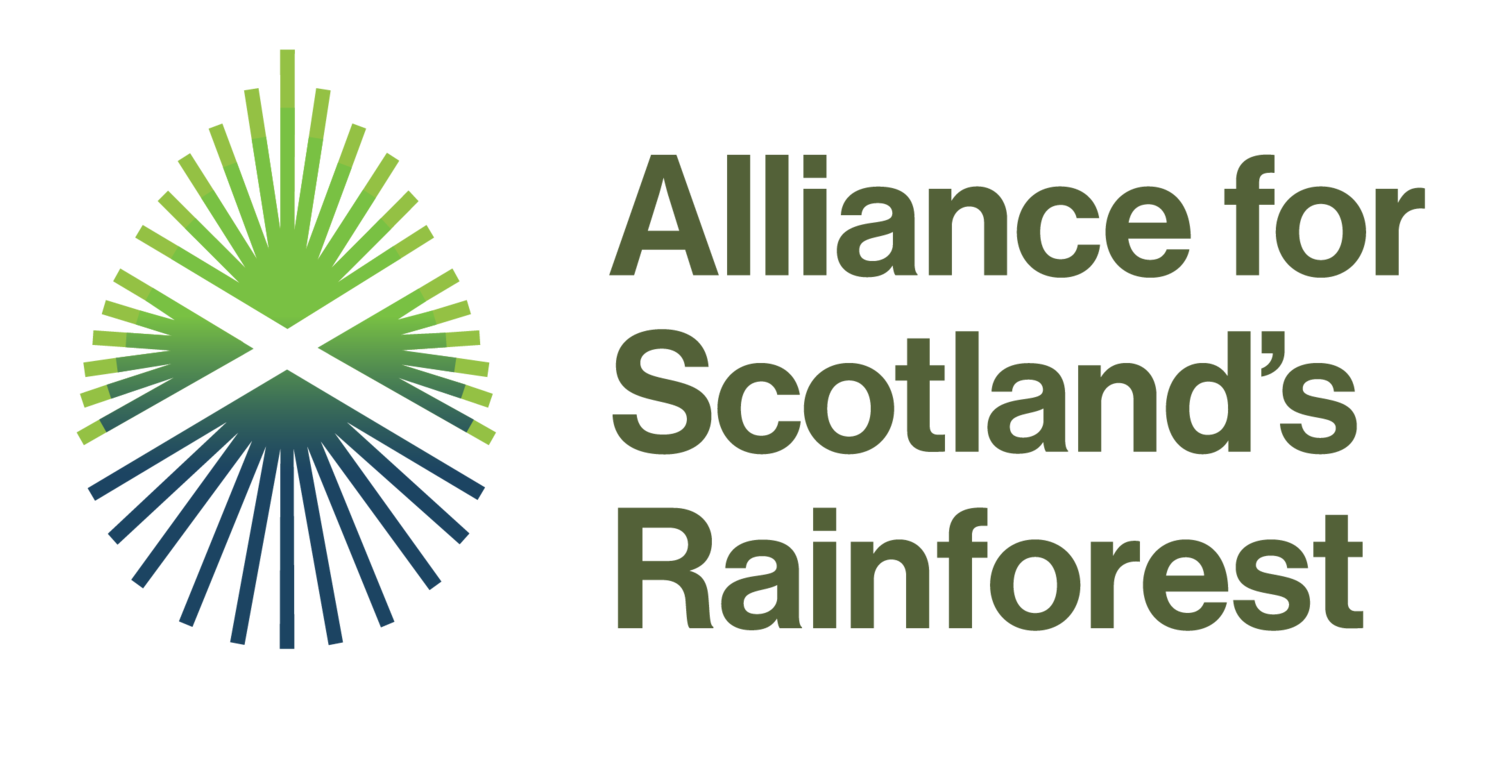The top five flowers of Scotland’s rainforest
Scotland’s rainforest isn’t all trees, moss and lichen. In amongst the dappled glades grow beautiful woodland flowers that are an important food source for all sorts of wildlife, particularly insects like butterflies and bees. You’ll find flowers in bloom from spring to autumn, and many also produce seeds and berries that provide a second feast for birds and mammals.
Here are five to look out for:
1) Foxglove (Digitalis purpurea)
Most people will recognise the distinctive, upright shape of a foxglove, and although you might see white ones or even apricot-coloured foxgloves that have escaped from gardens, the truly wild variety is pinky-purple.
Alternative names for the foxglove are fairy fingers and fairy gloves, and given the shapes of the flowers, it’s easy to guess why; the Latin name digitalis actually means finger-like. But sadly, the origin of the fox part of the name seems to have been lost in the mists of time.
Foxgloves are very popular as a food source for insects, particularly bumblebees, and the white spots on the inside of the flowers actually help guide them to where the nectar is.
During World War I and II, wild foxgloves were collected from the UK countryside in huge numbers for a compound they contain called digitalin, which is used to treat heart arrhythmias. The digitalin makes foxgloves extremely toxic, and you should avoid touching them (and certainly don’t eat them!).
2) Common dog violet (Viola riviniana)
There are several species of violet, but the dog violet is the most common and widespread. It can be found in hedgerows and on grassland as well as in woods. It’s easiest to identify from April to June when its pretty, dark purple flowers are in bloom. These grow quite low to the ground, around 15cm tall, and rise up from dark green, heart-shaped leaves.
The name comes from the fact that the flower has no scent, as for some reason ‘dog’ was a historical term for an unscented flower. They’ve very similar to the sweet violet in appearance, but the smell is the thing tells them apart.
The dog violet is an important flower for butterflies and is a favourite of both the pearl-bordered and small pearl-bordered fritillaries. The adults feed on the flowers, and also lay their eggs on the leaves so that their caterpillars have something to munch on when they hatch out.
3) Honeysuckle (Lonicera periclymenum) also known as woodbine
This beautiful climbing plant is incredibly important for wildlife. Its flowers are night-scented, attracting moths, while butterflies and bees feed on the nectar during the day. Many species of birds eat its red berries in the autumn (though these are poisonous to humans).
You’ll see honeysuckle growing in woodland and in hedgerows, scrambling up tangled undergrowth and twining its way around branches. It’s quite a common plant across the UK, though as with foxgloves, there are numerous varieties of garden-escape to watch out for.
Honeysuckle flowers from June to September, and the native variety produces a range of colours from cream through to yellow-orange, with a tinge of pink or red. They’re heavily scented in the evening and at night.
Honeysuckle has often been seen as a lucky plant, particularly when grown near the home.
4) Bluebell (Hyacinthoides non-scripta)
Bluebells are a great indicator species for areas of ancient woodland, even when the trees are no longer there. They’re very slow growing, and don’t like disturbance, particularly trampling by either people or animals. They’re an iconic woodland and hedgerow flower, and seeing thousands in bloom in a rainforest glade really is breathtaking.
Bluebells are… blue, or some say that they’re deep violet in colour. They’re bell-shaped with little up-turned, pointed edges, like the brim of a hat. Most of the year they’re invisible underground, but they emerge en mass in April and May depending on the weather and where they’re growing.
The UK is very much a stronghold for bluebells, and as they bloom so early in the year, they’re a really important food plant for all sorts of pollinating insects like bees and hoverflies.
There are two big threats to bluebells. The first is from people digging up the bulbs or selling the seeds (both illegal). But the greater threat is from the non-native, invasive Spanish bluebell. These look very similar, and are both out-competing and hybridising with our native species.
As with many woodland flowers, there are loads of myths surrounding bluebells. It is said that if you pick one, the fairies will take you away. As they also contain toxic compounds, it’s definitely better to leave bluebells alone and just enjoy them from a distance!
5) Bogbean (Menyanthes trifoliata)
While most people could probably identify a bluebell or a foxglove, the bogbean is a bit more unusual. It’s a floating aquatic plant that seems like it would be more at home in a tropical rather than a temperate rainforest.
The flowers start off as pink buds but then open into white blooms in May and June. Unusually, these are fringed with white hairs making them look like they’re full of fluff, or even like they’ve gone a bit foostie! But they’re very pretty, particularly when you see lots of them in bloom together.
You’ll find bogbean in bogs, shallow pools and around loch edges. It was once quite common in the UK, but has become rarer due to the draining of wetlands.






